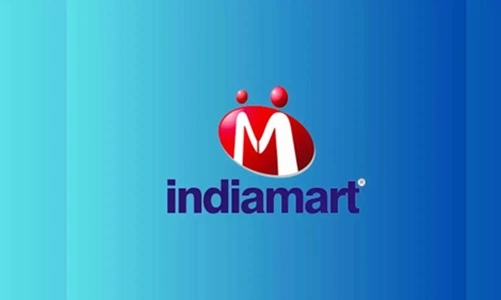IndiaMART, one of India’s largest online B2B (Business-to-Business) marketplaces, has revolutionized how businesses connect and transact. Established in 1999 by Dinesh Agarwal and Brijesh Agrawal, IndiaMART serves as a platform that bridges buyers and suppliers, simplifying procurement for enterprises across industries. With its robust tech-enabled platform and extensive reach, IndiaMART has become a critical tool for businesses of all sizes.
In this article, we delve into IndiaMART’s business model, revenue streams, and strategies that have made it a dominant player in the B2B e-commerce space.
IndiaMART’s Business Model Overview

IndiaMART operates as a B2B marketplace, facilitating interactions between buyers and sellers. Its platform provides a directory of suppliers across a wide range of product and service categories, making it easier for businesses to discover and connect with the right partners.
Key Features of IndiaMART’s Business Model:
-
- Buyer-Supplier Marketplace: IndiaMART allows buyers to post their requirements and connect with verified suppliers offering the desired products or services.
- Lead Generation Platform: The platform generates leads for suppliers by providing inquiries from potential buyers.
- Subscription-Based Revenue: IndiaMART primarily monetizes its platform through subscription plans for sellers, offering enhanced visibility and access to leads.
- Freemium Model: The company employs a freemium model where basic access is free for suppliers, while premium features come at a cost.
IndiaMART’s scalable and technology-driven approach ensures seamless operations and value creation for its users.
How IndiaMART Earns Money
IndiaMART’s revenue model is primarily subscription-based, supplemented by other income streams. Here’s a breakdown of its revenue streams:
a. Paid Memberships
IndiaMART offers subscription plans for suppliers to enhance their visibility and access to buyers on the platform. These plans include:
-
- Silver, Gold, and Platinum Packages: Different tiers of membership provide varying levels of visibility, lead access, and promotional opportunities. Higher-tier memberships come with features like priority listing and a dedicated account manager.
- Pricing Structure: Subscription fees vary based on the supplier’s industry, product category, and geographic location.
b. Lead Generation and Verification Services
-
- Suppliers pay IndiaMART for access to verified leads. IndiaMART collects buyer inquiries, verifies their authenticity, and shares them with relevant suppliers.
- Verified leads increase conversion rates for suppliers, making it a valuable service.
c. Advertising Revenue
-
- IndiaMART earns from advertising on its platform. Suppliers can purchase banner ads, featured listings, and sponsored posts to gain higher visibility and attract more buyers.
- Ads are targeted based on buyer behavior and search patterns, ensuring effective exposure for suppliers.
d. Transaction Fees
-
- While IndiaMART does not facilitate direct transactions on its platform, it earns commissions or fees from certain transaction-based services like logistics and payment gateways provided through its partners.
e. SaaS Tools and Value-Added Services
IndiaMART offers SaaS-based solutions and value-added services to help businesses manage their operations more effectively. These include:
-
- CRM Tools: IndiaMART offers customer relationship management (CRM) software to help businesses manage inquiries, leads, and interactions.
- Catalog Hosting Services: Suppliers can pay IndiaMART to host and maintain detailed product catalogs on the platform.
f. IndiaMART TrustSEAL
-
- Suppliers can purchase the TrustSEAL certification, a verification badge that adds credibility and trustworthiness to their profiles. This certification helps suppliers attract more buyers and improves their chances of conversion.
g. Export and Global Trade Services
-
- IndiaMART caters to international buyers and sellers, earning revenue by helping Indian businesses connect with global clients.
- Premium international listings and export-specific tools contribute to this revenue stream.
Technology-Driven Operations
IndiaMART leverages technology to optimize its platform and enhance user experience. Key technological innovations include:
a. AI-Powered Search and Recommendations
-
- IndiaMART uses artificial intelligence to provide buyers with personalized product recommendations and search results based on their preferences and browsing behavior.
b. Automated Lead Matching
-
- The platform uses machine learning algorithms to match buyer inquiries with the most relevant suppliers, improving efficiency and conversion rates.
c. Mobile App and CRM Tools
-
- IndiaMART’s mobile app and SaaS tools allow suppliers to manage inquiries, leads, and transactions seamlessly from anywhere.
d. Voice Search and Chat Features
-
- The platform supports voice search and AI-driven chatbots, making it easier for users to find products and services quickly.
Key Strategies Behind IndiaMART’s Success
IndiaMART’s sustained growth can be attributed to its strategic focus on value creation and market expansion. Here are the key pillars of its strategy:
a. Freemium to Premium Conversion
-
- IndiaMART’s freemium model attracts a large base of suppliers who can upgrade to paid plans for better visibility and lead access.
b. Expanding Buyer and Seller Network
-
- With over 7 million suppliers and 100 million buyers, IndiaMART has created a massive network effect. More suppliers attract more buyers, and vice versa.
c. Focus on Small and Medium Enterprises (SMEs)
-
- IndiaMART primarily targets SMEs, which often lack the resources to market their products and services independently. The platform provides a cost-effective way for these businesses to connect with buyers.
d. Localization and Diverse Product Categories
-
- IndiaMART caters to diverse industries, from industrial equipment to office supplies, ensuring broad appeal. It also focuses on localizing its offerings for regional markets.
e. Trust and Credibility
-
- Through TrustSEAL certifications, verified leads, and secure interactions, IndiaMART builds trust among its users, encouraging repeat business.
Financial Performance
IndiaMART has demonstrated strong financial growth and profitability. Key highlights include:
-
- Revenue Growth: The company has consistently reported year-on-year revenue growth, driven by paid memberships and advertising income.
- Profitability: IndiaMART’s asset-light business model and recurring subscription revenue contribute to its profitability.
- Market Leadership: IndiaMART holds a dominant position in India’s B2B e-commerce market, with a substantial lead over competitors like TradeIndia and Alibaba India.
Challenges and Future Prospects
Challenges
-
- High Competition: Competing platforms like Alibaba, TradeIndia, and regional players pose a threat to IndiaMART’s market share.
- Trust Issues: Ensuring the authenticity of suppliers and leads is critical to maintaining user trust.
- SME Adoption Barriers: Many SMEs are still hesitant to adopt digital platforms, limiting IndiaMART’s potential customer base.
Future Prospects
-
- Global Expansion: IndiaMART can explore international markets by helping Indian suppliers connect with global buyers.
- Enhanced FinTech Offerings: Expanding into financing solutions like loans for SMEs could unlock new revenue streams.
- AI and Automation Investments: Further integration of AI and machine learning will improve user experience and operational efficiency.
- Sustainability and ESG Initiatives: Promoting sustainable practices and eco-friendly products could align IndiaMART with global trends.
Conclusion
IndiaMART’s business model is a blend of technology, scalability, and customer-centricity, making it a leader in the B2B e-commerce space. By providing an ecosystem that bridges the gap between buyers and sellers, IndiaMART has established itself as an indispensable tool for businesses, especially SMEs. With its diversified revenue streams and focus on innovation, IndiaMART is well-positioned for sustained growth in the evolving digital economy.

